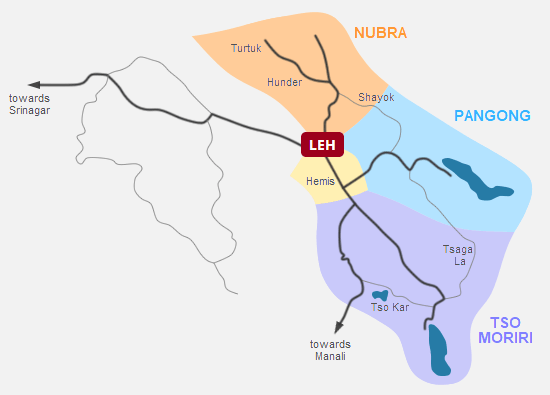

This tour takes between 4 and 8 days to cover the Nubra valley, Pangong lake, Tso Moriri lake & Tso Kar lake and the Indus valley.
Start with crossing the Khardung La pass, the highest motorable road in the world wich leads to the Nubra valley. Visit Diskit monastery, experience a camel ride at Hunder sand dunes and visit Samstanling monastery in Sumur. If you have time, you could go to Turtuk village, Panamik hot spring and hike to the picturesque Yarab Tso lake.
Next, head to the mesmerizing Pangong lake via Shayok valley and Tangtse. From Pangong, follow the road along the Chinese border via Tsaga La pass to reach Tso Moriri lake. You can also spend a night in Hanle and drive to Tso Moriri the next day if you have an extra day for this tour.
Spend a night in Korzok village on the bank of the scenic Tso Moriri lake. Relax at Puga hot springs. Explore the land of the nomads and go birdwatching at Tso Kar lake. Then, cross the Taglang La pass to reach the Indus valley.
Visit Hemis monastery, Thiksey monastery and Shey palace before returning Leh. If you have time, you can also stop at Stakna monastery and Stok palace.
You can choose whether you want to include the visit to Turtuk village in this Ladakh tour. You also need to decide if you want to go spend one night in Hanle:
At the end of the trip, after visiting Nubra valley, Pangong lake and Tso Moriri lake, you could drive to Manali instead of going back to Leh. It takes 2 days to drive from Tso Moriri to Manali via Tso Kar lake, Pang, Sarchu, Jispa and Rothang La pass.
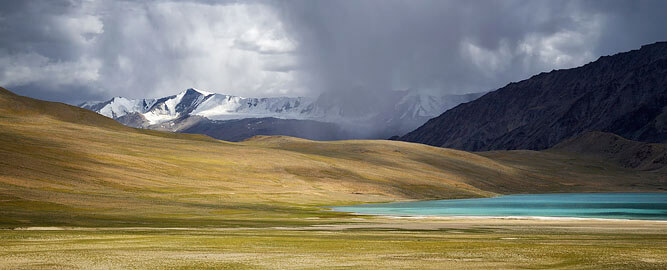
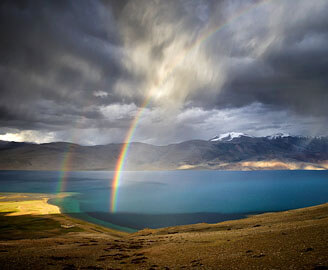
This tour is a big loop that covers almost all the attractions of Ladakh. It combines the Nubra valley tour, the Pangong lake tour, the Tso Moriri lake tour and the monastery tour in the Indus valley. The only part of Ladakh that is not covered in this tour is the Sham region (western part of Ladakh).
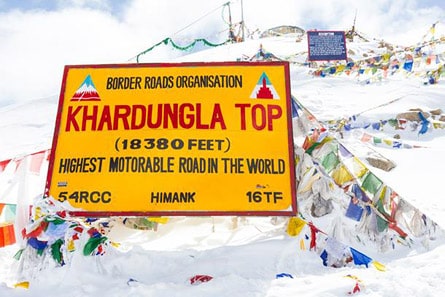
The Khardung La pass is one of most visited and photographed places in Ladakh. It is the highest motorable road in the world. The pass connects Leh with Nubra valley and it serves as a gateway to the famous Siachen glacier. This road is very strategic to the Indian Army to transport food and supplies for that reason the road remains open throughout the year.
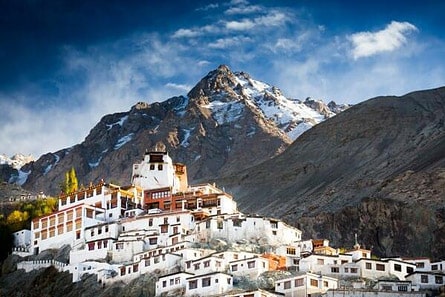
Diskit monastery, located in Diskit village, is the largest gompa in the Nubra valley. Diskit is the administrative centre and the commercial hub of Nubra valley and it is famous for its monastery. The monastery complex is built on the rocky hill, overlooking the village and the Shayok valley. It belongs to the Gelugpa sect (yellow hat). The monastery contains a prayer hall, statues of Buddhist guardians, wall frescoes and instruments. Within the monastery complex, there is an impressive statue of Maitreya Buddha that is 32-metre high.
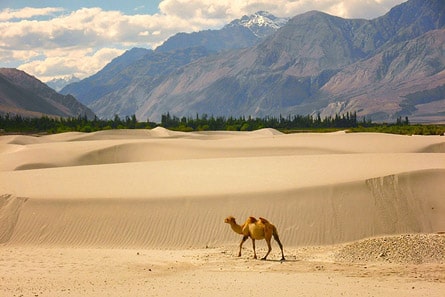
Hunder Sand dunes are a high-altitude cold desert near Hunder village. Experience the Bactrian camel riding in the shadow of the towering sand dunes across the sprawling Hunder desert. These two humped camels are the remnants of the Silk Road trade; they were used to transport heavy loads because they are well suited for long journey over rough terrain. The best time to visit is before the sunrise or around sunset to enjoy the sight of colours and light.

Sumur is a quiet and serene village, 34 km from Diskit and 39 km from Hunder village. Sumur is a perfect stopover for travellers who are taking 3 or 4 days trip in the Nubra valley or those who are travelling straight to Pangong lake from Nubra valley via Shayok road. The village is well known for its monastery of Samstanling. The monastery was founded by Lama Tsultim Nima and it is one of the largest gompas in Nubra and today almost 100 monks reside here.

This picturesque village, located at the frontier of Pakistan, occupies a splendid position in the Nubra valley. Turtuk village is surrounded by green buckwheat and barley fields and you find apricot, walnut and mulberry trees everywhere. The inhabitants of Turtuk are ethnic Muslims and they speak Balti language along with Ladakhi and Urdu. There is a family-run heritage museum which attempts to preserve the Balti art, culture and tradition. Turtuk village has incredible scenic views and offers visitors an unforgettable experience that is worth adding to your bucket list.
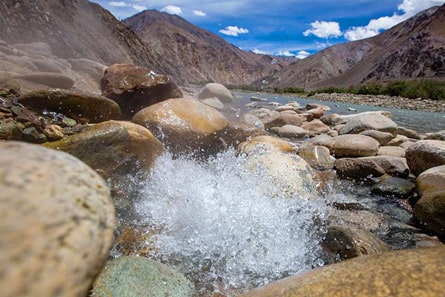
Panamik is a very scenic village on the way to Siachen Glacier. The village is famous for its sulphur hot springs that are considered to have therapeutic benefits. You can take a dip in the hot springs. If you wish you take a bath, there is separate bathroom facility available for both men and women. Panamik village stands on the Nubra river which makes the place even more charming and pristine.
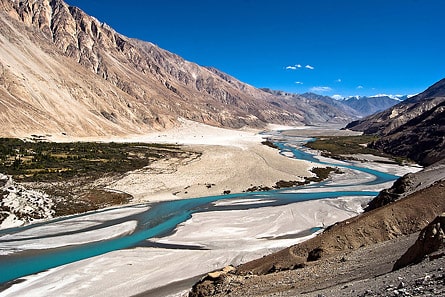
The Shayok valley offers simply gorgeous and breathtaking scenery that connects Nubra region to Pangong lake through a road. The Shayok valley is situated along the Shayok river that orginates from Rimo glacier and the valley is easily reached through Khardung La. A drive through this valley offers majestic mountain views and plenty of adventures. Bring your camera along as this area is a photographers’ paradise.
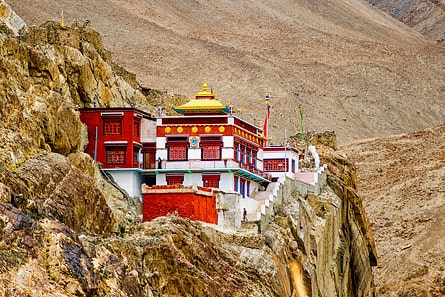
Tangste is one of the largest villages in Changthang region, it is 117 km from Leh and 35 km from Pangong lake. There are plenty of restaurants and tea houses where it is definitely worth stopping during your trip to Pangong lake. If you are looking for guesthouse or hotel for a night stay, you will find good and affordable options here. The village is also well known for its monastery which is built on a rocky hill. The monastery belongs to Drigung sect and it is a great place to enjoy the views of the village and the surrounding area.
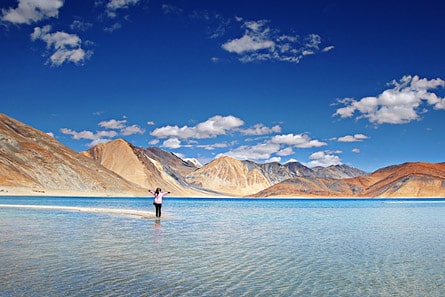
Pangong lake is the one of the highest lakes in Ladakh, situated at an altitude of 4,250 metres above sea level. The lake is well known for its pristine blue colour and it is the most visited lake in Ladakh. The last scene of the famous Bollywood movie “3 Idiots” was shot at Pangong lake. Following the release of the film, the number of tourists has increased exponentially. The lake is also the breeding ground for many migratory birds that attracts many birding enthusiasts to observe and study bird species and to photograph at the same time.
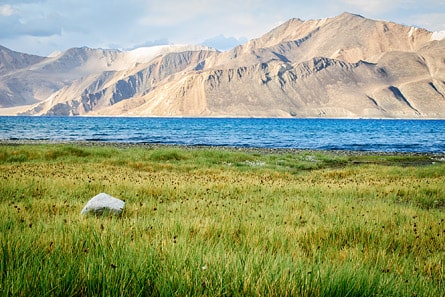
Spangmik village is situated at the bank of Pangong lake in the Changthang region. The inhabitants are semi-nomadic people who rear sheep, yaks and pashmina goats. The pashmina wool is one of the income sources for the people other than their livestock. Beside this, they also grow wheat and barley and cultivate vegetables such as potatoes, peas and turnips.
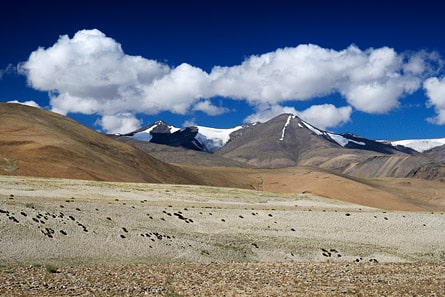
Tsaga La is the mountain pass that you cross when you drive from Pangong to Tso Moiri via Chushul. You need to get Inner Line Permit to visit this area as it is located just a few kilometres away from LAC (Line of Actual Control) between India and China and you will come across many army posts. The route is long and bumpy but you will be rewarded with snow clad mountains and diverse landscapes that are bursting with natural beauty.
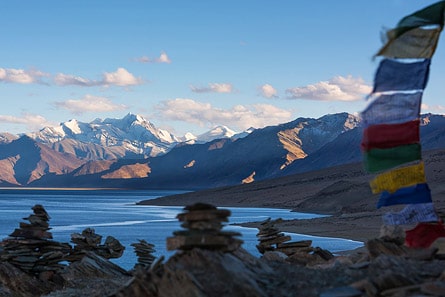
Tso Moriri lake is one of the most beautiful and highest altitude lakes located in the south-eastern part of Ladakh. Situated at 4,530m, it stretches up to 26 km long and 8 km wide, surrounded by snowy mountain range and one could see peaks of Chamser Kangri (6,620m) on the left and Lungser Kangri (6,666m) on the right. The lake is a breeding ground for many rare bird species for that reason it is declared as wetland conservation reserve to establish long-term conservation and wildlife practices and protection. The lake completely freezes in winter when the temperature plunges to below freezing.
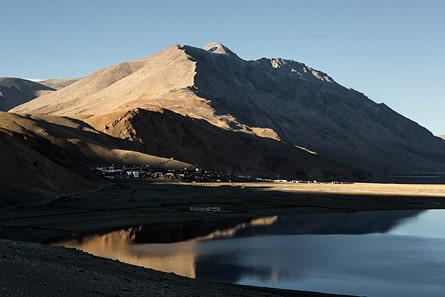
Tucked away up in the high mountains of the Himalayas, Korzok village is one of the highest permanent settlement in Ladakh. The village is situated on the bank of Tso Moriri lake and its inhabitants, known as Changpa, are semi-nomads who rear pashmina goats, sheep and yaks. Korzok monastery is located in the heart of the village that overlooks Tso Moriri. The gompa belongs to the Drukpa order; it is home to about 70 monks. Korzok attracts people from all parts of Changthang region during its annual 2-day monastery festival.
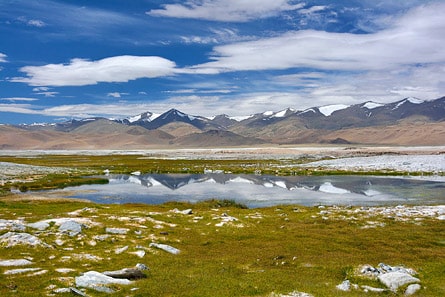
Tso Kar lake is situated in Rupshu valley in the southern part of Ladakh. Tso Kar means white lake in Ladakhi, because of layers of salt that get deposited on its bank. The salt used to be an important trade item for the people living in this area. The lake is a popular destination for wildlife enthusiasts and bird watchers. Tso Kar lake is the breeding ground for many beautiful birds like Bar-headed Geese, Ruddy Shelduck, etc. The black-necked crane is one of the major attractions for the lake and wildlife such as Tibetan Gazelles and Kiangs inhabit this basin of Tso Kar and the adjoining grasslands and barren hillsides.
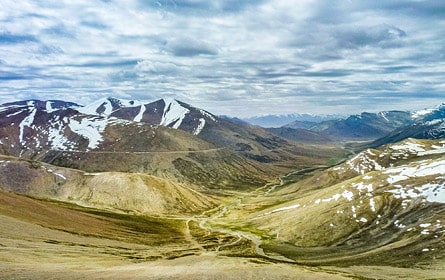
Taglang La is the highest pass on the Leh-Manali highway, it is the first pass you will come across if you are driving from Leh to Manali. The road turns sharply and zig zag up the top of Taglang La. Along the way you will see beautiful mountain sceneries and small villages.

Hemis monastery is one of the most important and renowned gompas in Ladakh. It was founded by Stagsang Raspa in the 17th century and it is the seat of Drukpa Kagyu sect. The monastery is closely associated with the royal family of Ladakh. There are numerous prayer rooms, a rich collection of Buddhist statues, stupas, scriptures and frescoes. The museum at Hemis monastery displays valuable artefacts, Buddhist relics, a wide collection of Tibetan books, thangka paintings, etc. One of the temple houses an 8-metre-high statue of Guru Padmasambhava. Hemis is also known for its annual mask dance festival which is celebrated on the 10th day of the 5th month of Tibetan lunar calendar to mark the birthday of Guru Padmasambhava.
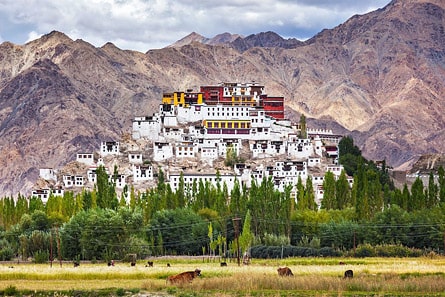
Thiksey monastery is one of the most photographed monasteries in Ladakh for its enticing beauty and grandeur. Thiksey monastery is often compared with the Potala Palace in Lhasa in Tibet because of similar architectural appearance. Built in mid-15th century, the monastery belongs to Gelugpa order (yellow Hat) and it is home more than 80 monk. Young monks study at their own school inside the monastery. Thiksey monastery houses the iconic 14m-high Maitreya Buddha statue that was constructed to commemorate the visit of the Dalai Lama in 1970. If you are a morning person then do not miss the early morning puja where you can observe monks chanting Buddhist scriptures accompanied by instruments.
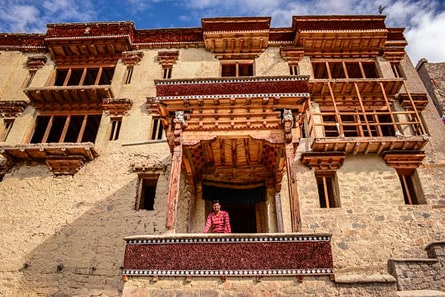
Shey palace is a gem of a monument in the village of Shey that stands tall and consolidates as one of the most frequented sights in Ladakh. It is situated 15 km to the east of Leh on the Leh-Manali highway. Built on a rocky ridge, the palace was the capital of Lower Ladakh until 1550 when the capital was moved to Leh. There are several rock carving on the nearby hill which are an important evidence of the early Buddhist artistic heritage of Ladakh. The highlight of the palace is the 12m-high Shakyamuni Buddha statue that was built by King Deldan Namgyal in memory of his father. Above the palace, one can see the remains of an old fortress.
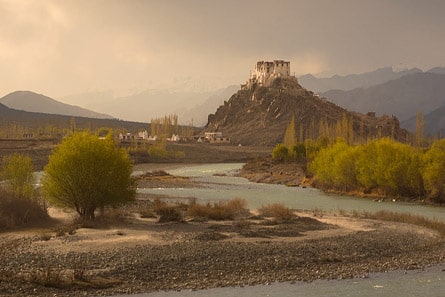
Stakna monastery is situated on the left bank of the Indus river on a hill that rises above the valley floor. It was founded in the 17th century by a great scholar from Bhutan on the invitation of the king Jamyang Namgyal. Stakna in Ladakhi means “Tiger’s nose” as the hill resembles a jumping tiger. The monastery belongs to Drukpa school of Buddhism and one of the holiest statues of Avalokiteshvara is enshrined here. Stakna monastery is a visually impressive structure that attracts both visitors and photographers. The monastery offers amazing views of the lush green Indus valley and the surrounding mountains.

Stok village is home 19th century Stok palace which is the current residence of the royal family of Ladakh. The palace was built by the Namgyal dynasty and it was once the summer palace for the royal family. Built entirely by Ladakhi craftsmen and today it houses a museum displaying fascinating objects such as royal family dresses, crowns, thangkas, family photos, Buddhist scriptures etc. The palace contains chapels maintained by a resident monk. Stok palace has opened its doors to the public by converting it into a heritage hotel. The queen’s room walls are lined with ancient fresco murals and it is among the most popular.
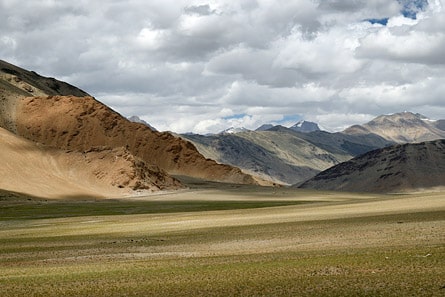
The Leh-Manali road is open only in summer and it remains closed for around 6 to 7 months because of heavy snowfall on passes (Rohtang La and Baralacha La). The average elevation of the highway is more than 4,000 metres and Taglang La pass (5,328 metres) is the highest pass on this route. For overnight stay or stop for tea break, you will find plenty of simple tourist camps in Pang, Sarchu and a hotel in Jispa.
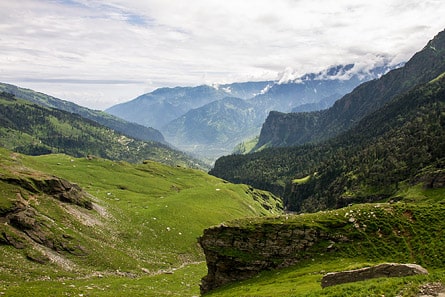
Rohtang La is a mountain pass located on the eastern part of Pir Panjal range of the Himalayas. Rohtang La pass is a crucial stretch that connects Ladakh with Manali and this pass also connects Lahual valley with Himachal Pradesh. The pass is reputed for its unpredictable weather and snowstorms. The pass remains open from May to November and it is closed in winter due to heavy snowfall.
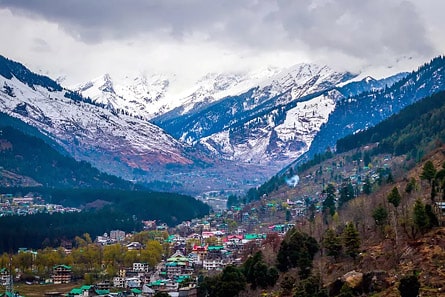
Manali is a town of 8,000 inhabitants situated in foothills of the mighty Himalayas in the state of Himachal Pradesh. It is a popular hill station that offers plenty of outdoor activities like trekking, rafting and skiing according to the season. It is also a favourite destination for newly married couples. You will find a wide range of accommodation from luxury to budget, nice restaurants and sprawling local markets. Private and public transports are easy to book for Delhi and other places.
The best time for this tour is from May to October, when the weather in Ladakh is the most pleasant. If you intend to end the tour in Manali instead of going back to Leh, you need to plan the trip when the Leh-Manali road is open, between June and mid-October.
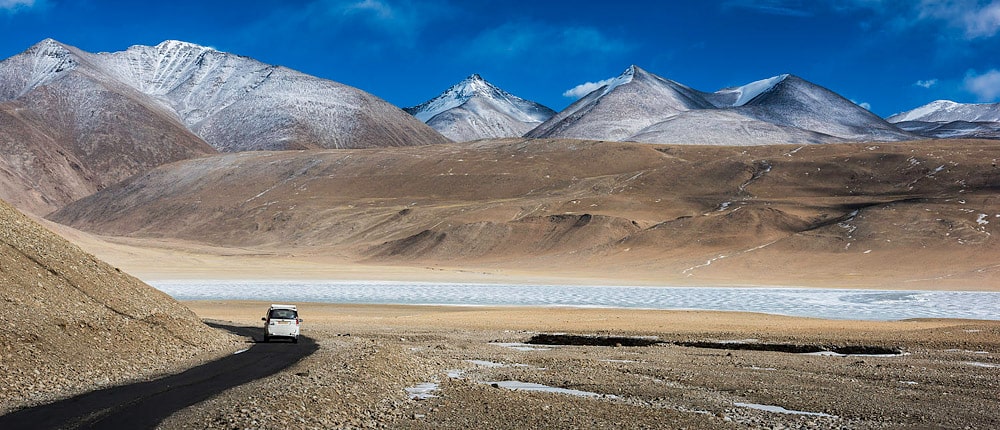
The altitude must be carefully taken into account when planning a trip in Ladakh. You need 2 days of acclimatization before starting this tour. During these 2 days, you could visit Leh and the Sham region. Respecting acclimatization time is essential to avoid altitude sickness.
The tour starts with crossing the Khardung La pass, the world’s highest motorable road at 5,602m. However, you will only spend a short time at this altitude before going down to the Nubra valley that lies at 3,150m. After visiting the Nubra valley, you will head to Pangong lake which is located at an altitude of 4,250m. Your next destination will be even higher, as you will go to Tso Moriri lake and stay in Korzok village at an elevation of 4,530m.
During this trip, it is recommended to rent an oxygen cylinder that can be used to alleviate symptoms of Acute Mountain Sickness.
The Nubra valley, Pangong lake and Tso Moriri lake are situated near the border with Pakistan and China. Therefore, an Inner Line Permit (ILP) is required when travelling to these places.
You can apply for the Inner Line Permit when you are in Leh. The application process takes only one working day and it is quite cheap. The same permit is used for all the restricted areas of Ladakh.
The mobile network reception and Internet connectivity are fairly limited in the remote corners of Ladakh. During this tour, you will get pretty good connectivity when you are in the Nubra valley. At Pangong lake, the network is weak and calling is not always possible. You may use sms instead. At Tso Moriri and in the remote corners of the Changthang region, you will mostly be out of network coverage area.
There are many accommodation options in the Nubra valley, from small guesthouses to luxury hotels. Camps are available at Pangong lake. For lodging in Tso Moriri area, options are more limited.
Even in remote areas of Ladakh, you can always find homestays and guesthouses. Since there is limited internet access, most of these homestays and guesthouses cannot be booked in advance. Your driver will help you to find a guesthouse or homestay when you reach the location.

From Leh, drive north across the Khardung La pass to reach the Nubra valley. Visit Diskit monastery and Hunder sand dunes. Night in Hunder or Diskit.
After breakfast, head to Sumur village and visit Samstanling monastery. Then, drive to Pangong lake via the Shayok road and Tangtse. You could stop for lunch at Tangtse. Afternoon at the lake. Night at Pangong lake.
After enjoying the beautiful sunrise over Pangong lake, drive to Tso Moriri lake via a remote road along the border with China and the Tsaga La pass. Tso Moriri lake, located at an altitude of 4,530m, is simply jaw-dropping. Night in Korzok, the only village near the lake.
In the morning, drive to Tso Kar lake, a famous spot for bird watchers. Then, head back towards Leh via Taglang La pass and visit Hemis monastery and Thiksey monastery. Drive back to Leh.
Note: This tour involves a lot of driving on rough roads. It is recommended to do this tour in 5 days so that you can spend 2 nights and one full day at Tso Moriri lake or Pangong lake to relax.
From Leh, drive to the Nubra valley via the Khardung La pass. Visit Diskit monastery and Hunder sand dunes. Night in Hunder or Turtuk.
Explore the charming village of Turtuk and discover its rich Balti culture. Drive to Panamik hotspring and Samstanling monastery in Sumur. Night in Panamik or in Sumur.
After breakfast, follow the Shayok road and drive to Pangong lake. On the way, you could stop in Tangtse for lunch. Stroll along the shore of the lake. Night at Pangong lake.
Drive to Tso Moriri lake via the isolated Tsaga La pass. Tso Moriri lake is the largest of the high altitude lakes entirely within India. Night in Korzok.
In the morning, go to Tso Kar lake where you might spot the majestic black-necked crane. Then, drive back to Leh via Taglang La pass and visit Hemis monastery and Thiksey monastery on the way.
Drive from Leh to the Nubra valley via Khardung La pass. Visit Diskit monastery and Hunder sand dunes. Night in Hunder or Diskit.
After breakfast, visit Samstanling monastery in Sumur and drive to Pangong lake via the Shayok road and Tangtse. Night at Pangong lake.
Drive to Tso Moriri lake via Tsaga La. Night in Korzok.
In the morning, head to Tso Kar lake, a wonderful place for wildlife lovers. Then, drive to Sarchu. Night in Sarchu or Jispa.
Drive to Manali via Rothang La pass.
From Leh, head to the Nubra valley via Khardung La pass. Visit Diskit monastery and Hunder sand dunes. Night in Diskit, Hunder or Turtuk.
Take a stroll in Turtuk, India’s northernmost village located just 12 km from the border with Pakistan. Drive to Panamik hotspring and Samstanling monastery. Night in Panamik or in Sumur.
Drive to the beautiful Pangong lake via the Shayok road and Tangtse. Night at Pangong lake.
After breakfast, head to Tso Moriri lake via the remote road across Tsaga La pass. Night in Korzok.
In the morning, drive to Tso Kar lake where you can observe wildlife and birds. Then, head to Sarchu. Night in Sarchu or Jispa.
Drive to Manali via Rothang La pass.
